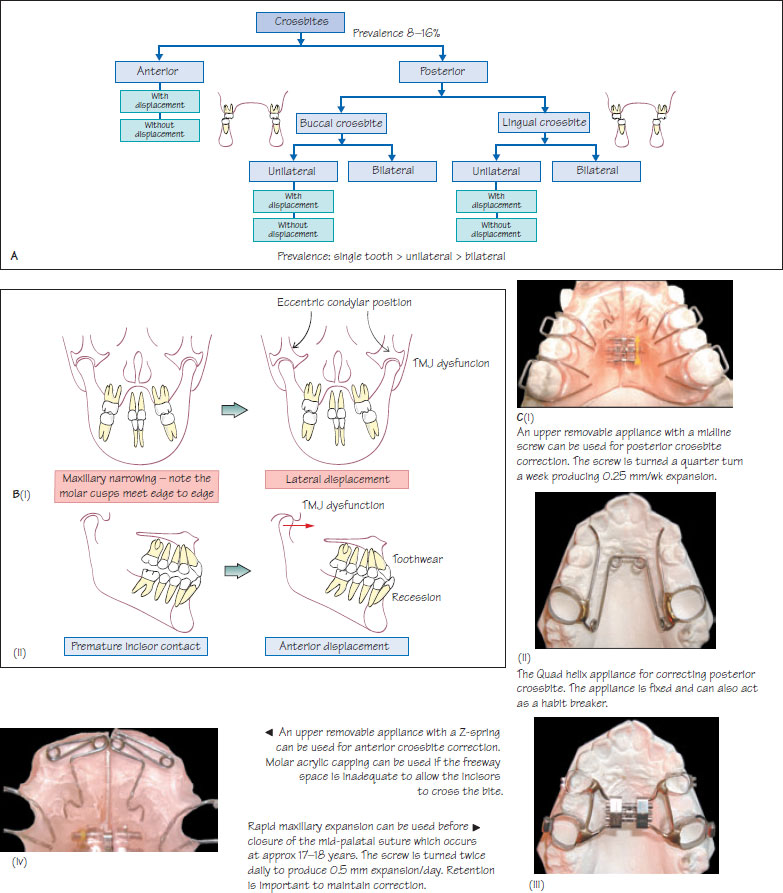30
Crossbites
Figure 30.1 (A) Classification of cross bites. (B) Crossbites with mandibular displacement: (i) posterior crossbite and (ii) anterior crossbite. (C) Fixed and removable appliance techniques for correction of crossbites.

A crossbite can be defined as an abnormal relationship between opposing teeth in a buccopalatal or labiopalatal direction. It is a common malocclusion affecting between 8% and 16% of the population. Figure 30.1A gives a classification of crossbites. An anterior crossbite exists when one or more of the maxillary incisors occlude lingual to the lower incisors with the posterior teeth in occlusion. A posterior buccal crossbite occurs when the buccal cusps of the lower molars occlude buccal to the fossae of the upper molars. A lingual crossbite (also termed a scissor bite) exists when the buccal cusps of the lower molars occlude lingual to the fossae of the upper molars. It is important that patients presenting with crossbites are examined for a mandibular displacement.
Aetiology of crossbites
Skeletal factors
A narrow maxilla can result in a unilateral or bilateral buccal crossbite. A unilateral crossbite most commonly arises when there is symmetrical narrowing of the maxilla to the extent that the upper and lower molar cusps meet tip to tip. This produces a mandibular displacement to one side to improve intercuspation leaving a crossbite on the side to which the mandible displaces (Figure 30.1B). When the maxilla is retropositioned relative to the mandible (skeletal III pattern) there may be an anterior crossbite or a relative buccal crossbite because a narrower part of the maxilla opposes a wider part of the mandible (Figure 8.1C). When the mandible is retropositioned relative to the maxilla (skeletal II pattern) a lingual crossbite may occur in the buccal segments. Significant asymmetrical mandibular growth is a rare cause of unilateral buccal crossbite (see Chapter 25).
Habits and soft tissue factors
When a thumb or finger sucking habit is of adequate/>
Stay updated, free dental videos. Join our Telegram channel

VIDEdental - Online dental courses


